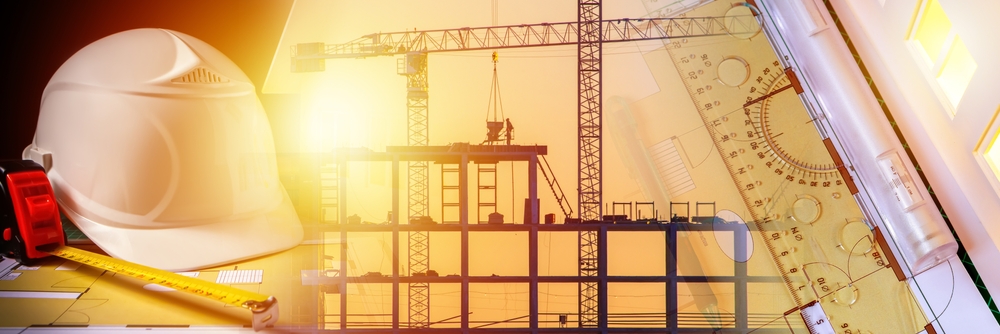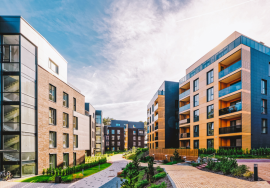What Are Smart Building Technologies?

 What Are Smart Building Technologies?
What Are Smart Building Technologies?
Introduction
Smart building technologies are transforming how modern buildings are designed, constructed, and managed. These advanced systems enhance operational efficiency, energy management, and occupant comfort by integrating automation, sensors, and data analytics. In this blog, we will explore the various smart building technologies that are reshaping the construction industry and revolutionizing how buildings operate.
Key Features of Smart Building Technologies
Smart building technologies utilize automation, artificial intelligence (AI), and the Internet of Things (IoT) to manage and control building functions. These technologies include:
- Building Management Systems (BMS): A BMS automates the control of HVAC, lighting, security, and other essential building systems. It monitors real-time data to optimize energy consumption and enhance operational efficiency. BMS can adjust systems based on occupancy, time of day, or environmental conditions, reducing energy waste.
- Energy Management Systems (EMS): EMS helps track energy use and provides insights to optimize energy efficiency. These systems monitor energy consumption patterns and suggest measures to reduce overall energy usage. EMS also plays a key role in integrating renewable energy sources into building operations.
- Smart Lighting Systems: Smart lighting automatically adjusts based on natural light availability, occupancy, and user preferences. This technology not only improves energy efficiency but also enhances the comfort and experience of building occupants.
For more details on EMS, visit Smart Building Technologies.
The Role of IoT in Smart Buildings
The Internet of Things (IoT) is a critical component of smart building technologies. It connects various devices and systems within a building, allowing them to communicate and share data.
- Sensors: IoT-enabled sensors are used for temperature, humidity, occupancy, and light levels. These sensors collect data and send it to centralized systems like BMS or EMS for analysis. This real-time information enables better decision-making and helps optimize building operations.
- Predictive Maintenance: IoT sensors can monitor the performance of building equipment and predict when maintenance is required. This reduces unexpected equipment failures and ensures the smooth operation of essential systems.
- Occupancy Sensors: These sensors detect the presence of people in a space, helping optimize heating, cooling, and lighting. For example, lights can turn off automatically in unoccupied rooms, saving energy.
The Benefits of Building Technologies
Implementing smart building technologies offers numerous benefits for both building owners and occupants:
- Energy Efficiency: Smart systems reduce energy consumption by optimizing heating, cooling, lighting, and ventilation based on real-time data. This helps lower utility costs and reduces the building’s environmental impact.
- Improved Occupant Comfort: Smart buildings enhance the comfort of occupants by automatically adjusting lighting, temperature, and air quality. Personalized control over environmental conditions is another key advantage.
- Cost Savings: Smart buildings lead to long-term cost savings through efficient energy use and predictive maintenance. By reducing equipment downtime and energy waste, building owners can save significantly on operating expenses.
Learn more about smart energy-saving technologies at Energy Efficiency World.
Challenges in Implementing Smart Building
While building technologies offer significant advantages, there are challenges that building owners and developers must address:
- Initial Cost: The installation and integration of smart technologies can involve high upfront costs. However, the long-term savings and efficiency gains often outweigh the initial investment.
- Complexity: Implementing smart systems requires expertise in integrating various components like IoT devices, sensors, and data analytics platforms. Ensuring that all systems work harmoniously can be challenging without proper planning and coordination.
- Data Privacy and Security: With the rise of IoT and connected systems, safeguarding data from cyber threats is critical. Building owners must implement strong cybersecurity measures to protect sensitive information.
The Future of Building Technologies
Smart building technologies are evolving rapidly, and the future looks promising. Some emerging trends include:
- AI Integration: Artificial intelligence will further enhance automation and data analysis in buildings, allowing systems to make smarter decisions about energy use and maintenance.
- Sustainability: As climate concerns grow, smart building technologies will increasingly focus on sustainability. Renewable energy integration, smart grids, and green building practices will become standard features of future buildings.
Conclusion
Smart building technologies are revolutionizing the way buildings operate, offering unprecedented levels of efficiency, comfort, and sustainability. With systems like BMS, EMS, and IoT-enabled devices, smart buildings are equipped to meet the demands of modern life while reducing energy use and costs. As these technologies continue to evolve, they will play an even greater role in shaping the future of sustainable construction.
For more information about integrating smart building technologies into your construction project, visit AMS India.
Read more related articles to enhance your knowledge and make informed decisions
10 Essential Steps in the Building Construction Process
How to Choose the Right Materials for Your Construction Project








